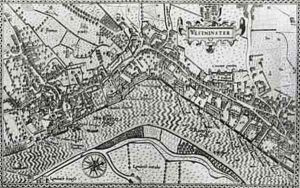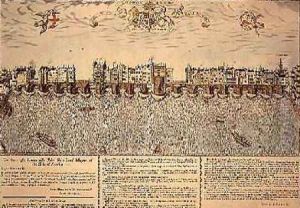John Norden Paintings
John Norden was an English cartographer, topographer, and county mapmaker who was active during the late 16th and early 17th centuries. Born in 1547 in Somerset, or possibly Wiltshire, Norden is best known for his work in pioneering detailed county mapping in England. He initially embarked on a career as a surveyor, which was a profession that allowed him to travel extensively across the country, laying the groundwork for his later mapping work.
In 1593, he published the 'Speculum Britanniae', which was a detailed description of Middlesex and the first of its kind. This work was part of a larger, ambitious project to provide a complete chorographical description of England, but Norden only managed to complete a few counties. Despite this, his work was significant in that it went beyond simple mapping and included detailed descriptions of the land, its usage, and the lives of its inhabitants.
Norden's maps were distinctive for their detail and accuracy, and they were among the earliest to show roads, even though they were not to scale. His work preceded that of the more famous cartographer John Speed, and it is believed that Speed was influenced by Norden's maps. In addition to his county maps, Norden also produced 'The Surveyor's Dialogue' (1607), a treatise on the practice of surveying, which was widely read and used by surveyors of the time.
Despite his contributions to cartography and topography, Norden led a life of financial insecurity. He petitioned King James I for assistance, and in 1618, he was appointed as the Surveyor of His Majesty's Woods in the South of Trent. Norden continued to work on his mapping and writing until his death in 1625. His legacy persists in the detailed maps and writings he left behind, which provide valuable insight into Elizabethan and early Stuart England.

